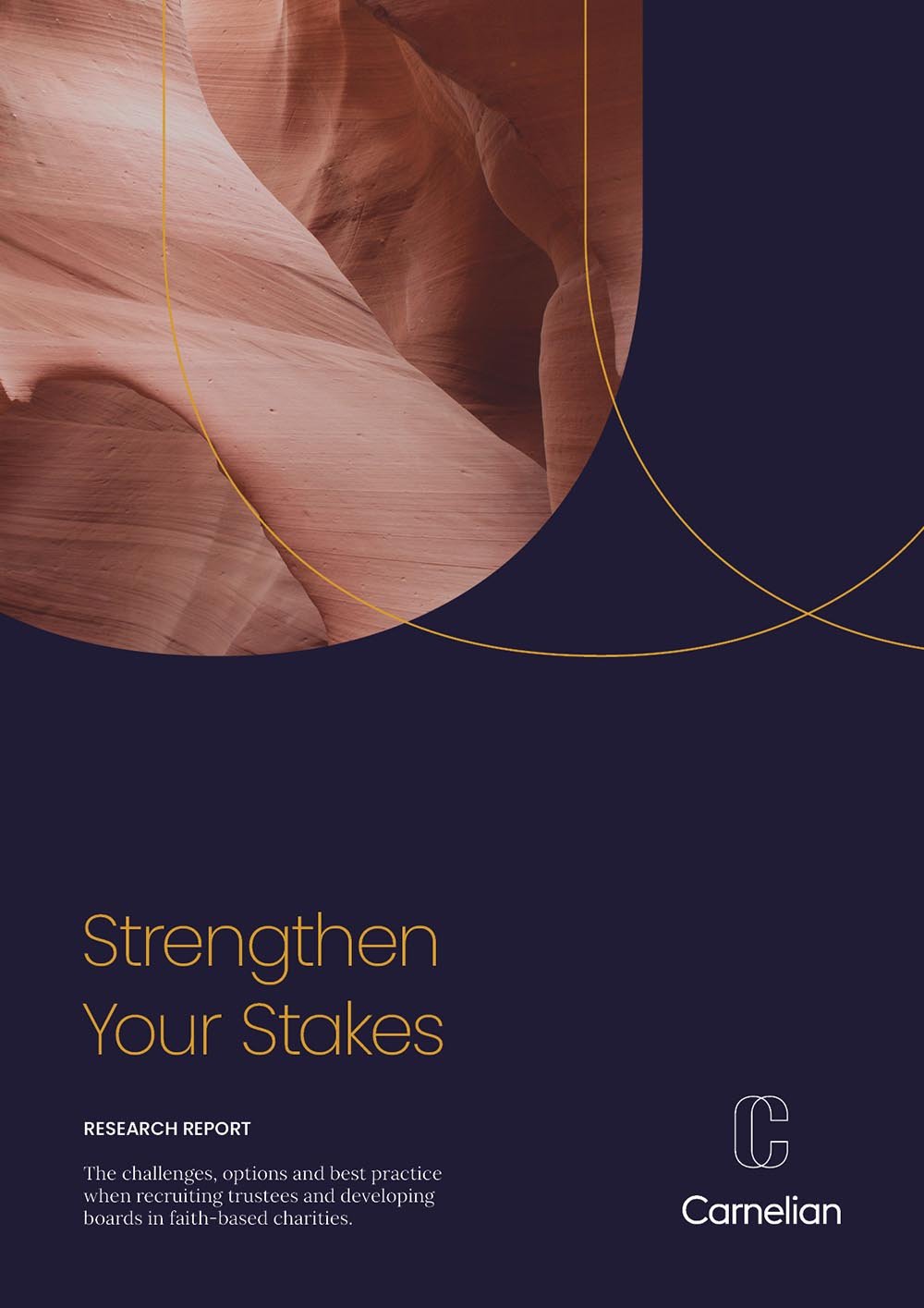
Our Insights
Our reports unlock key issues our clients face.
Whilst every organisation faces unique challenges, there are themes which are common across our clients. We release reports which target these themes, whether developing a strategy for trustee recruitment, or growing in the diversity of your senior leadership team. Our aim is to equip you to be leaders in the quality of your executive and non-executive leadership.
Research & Reports
-

Strengthen Your Stakes
The challenges, options and best practice when recruiting trustees and developing boards in faith-based charities.
-

Shepherding Success
The critical relationship between chair and CEO in faith-based organisations.
-

Female Leaders
Exploring the underrepresentation of women in CEO and chair roles in the faith sector.
-

Firm Foundations
Reflections on the recruitment of successful COOs in the cathedral sector.

